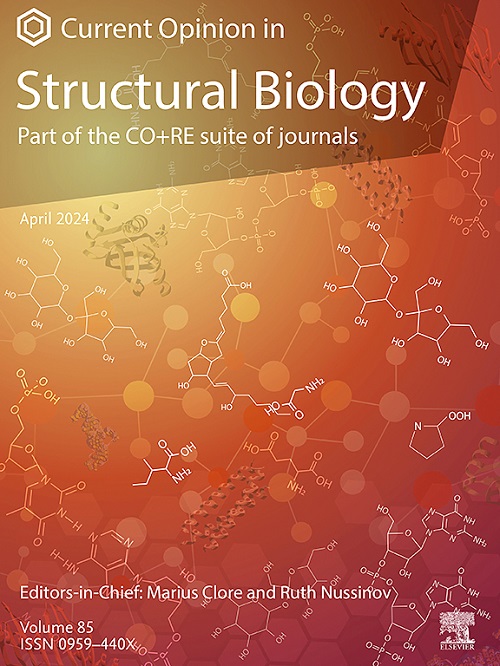高通量低温电子断层扫描使微生物的内部生活的多尺度可视化
IF 6.1
2区 生物学
Q1 BIOCHEMISTRY & MOLECULAR BIOLOGY
引用次数: 0
摘要
低温电子断层扫描(cryo-ET)是一种先进的、快速发展的成像技术,能够对生物结构在其原始状态下进行三维可视化。尽管cryo-ET历来面临着重大挑战,包括应用有限,数据采集繁琐,劳动密集型图像处理以及与单粒子冷冻电子显微镜(cryo-EM)相比分辨率较低,但最近硬件和软件开发的突破显着改善了整个cryo-ET工作流程,以实现更高的吞吐量和分辨率。这些进步加速了结构生物学和细胞生物学的发现,特别是在微生物学领域,低温低温技术已经揭开了对微生物内部生活的前所未有的见解。本文综述了推动高通量冷冻- et和微生物结构可视化的关键进展。随着成像技术、工作流程自动化和计算方法的创新不断快速发展,cryo-ET预计将越来越多地应用于生命科学的各个领域,塑造生物研究和生物医学发现的未来。本文章由计算机程序翻译,如有差异,请以英文原文为准。
High-throughput cryo-electron tomography enables multiscale visualization of the inner life of microbes
Cryo-electron tomography (cryo-ET) is an advanced and rapidly evolving imaging technique that enables three-dimensional visualization of biological structures in their native state. Although cryo-ET has historically faced significant challenges, including limited applications, tedious data acquisition, labor-intensive image processing, and lower resolution when compared with single particle cryo-electron microscopy (cryo-EM), recent breakthroughs in hardware and software development have significantly improved the entire cryo-ET workflow to enable higher throughput and resolution. These advances have accelerated discoveries in structural and cellular biology, particularly in microbiology, where cryo-ET has unveiled unprecedented insights into the inner life of microbes. This review presents pivotal advances propelling high-throughput cryo-ET and the visualization of microbial architecture. As innovations in imaging technologies, workflow automation, and computational methods continue progressing rapidly, cryo-ET is expected to be increasingly utilized across various fields of life sciences, shaping the future of biological research and biomedical discoveries.
求助全文
通过发布文献求助,成功后即可免费获取论文全文。
去求助
来源期刊

Current opinion in structural biology
生物-生化与分子生物学
CiteScore
12.20
自引率
2.90%
发文量
179
审稿时长
6-12 weeks
期刊介绍:
Current Opinion in Structural Biology (COSB) aims to stimulate scientifically grounded, interdisciplinary, multi-scale debate and exchange of ideas. It contains polished, concise and timely reviews and opinions, with particular emphasis on those articles published in the past two years. In addition to describing recent trends, the authors are encouraged to give their subjective opinion of the topics discussed.
In COSB, we help the reader by providing in a systematic manner:
1. The views of experts on current advances in their field in a clear and readable form.
2. Evaluations of the most interesting papers, annotated by experts, from the great wealth of original publications.
[...]
The subject of Structural Biology is divided into twelve themed sections, each of which is reviewed once a year. Each issue contains two sections, and the amount of space devoted to each section is related to its importance.
-Folding and Binding-
Nucleic acids and their protein complexes-
Macromolecular Machines-
Theory and Simulation-
Sequences and Topology-
New constructs and expression of proteins-
Membranes-
Engineering and Design-
Carbohydrate-protein interactions and glycosylation-
Biophysical and molecular biological methods-
Multi-protein assemblies in signalling-
Catalysis and Regulation
 求助内容:
求助内容: 应助结果提醒方式:
应助结果提醒方式:


